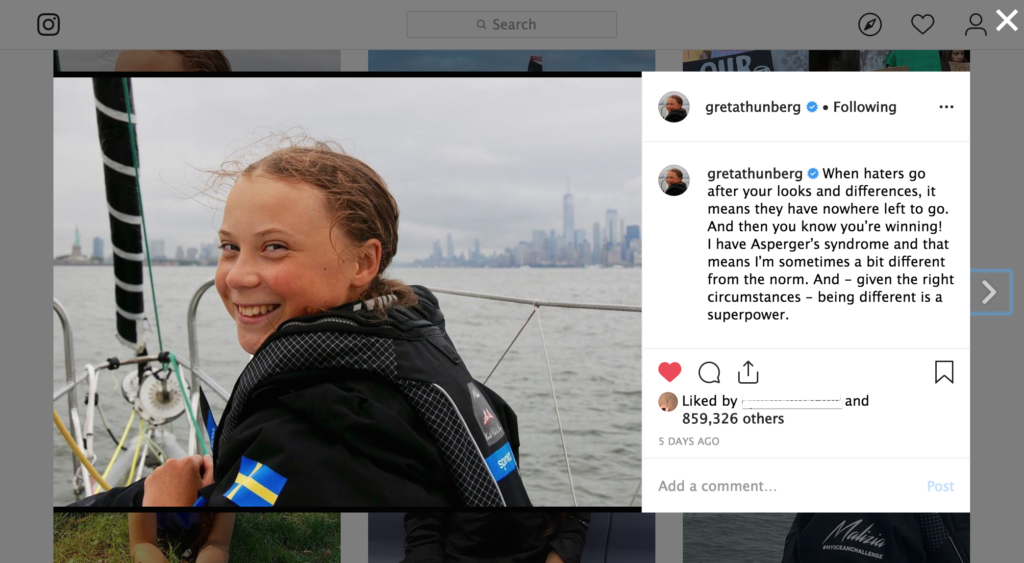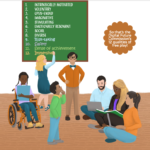
In the company of many many other people, I followed Greta Thunberg’s 15-day trip across the Atlantic from Plymouth in the UK to Manhattan on the 60-foot racing sailboat Malizia, both on Greta’s Instagram (she has 3 million followers now), on Team Malizia’s Instagram, and on the Team Malizia web tracker (the web tracker showed the wind direction, and their location daily—you can see how it worked here). Without relying on mainstream media to curate the story, I was able to go direct and follow along with close friends as Greta and Team Malizia made this challenging crossing.
It’s important to celebrate the Internet at its best, and to celebrate examples of people of all ages, but especially young people, using social media well. For example, Greta posted this on Instagram after she’d landed in New York. Dealing with haters is an essential skill for participating in the online commons in a more high profile way. And she turns the negative energy coming her way like a black belt in Aikido.

Exploring how Greta works with Instagram could be a great catalyst for a weekly conversation about technology with kids, tweens, and teens. If your kids are older, you might all talk about questions like these: now that Greta has 3 million Instagram followers (the media attention from the Atlantic trip definitely bumped up her numbers considerably), what do you think are some of her challenges? What do you appreciate about how she’s using the platform and how she’s telling her story? What do you think about her school strike? How do you think she feels about being so high profile now? What advice would you want to give her for her time in the US?
In many homes, families are already diving into the 2019–2020 school year. The shift into a new learning cycle, or the shift in seasons, from summer to fall, can create opportunities to do things a little differently. If you haven’t started a weekly conversation about technology, figure out how to introduce the idea and just begin. It’s a practice. When you make it clear that you value taking time for such intentional conversation, make it interesting and extremely participatory, and just show up over time, amazing things can happen.
As I wrote here in September of 2017:
I consider the practice of Co-Creative Conversation a foundation for Mindful Digital Life. This practice can help us to build a family culture of genuine conversation about our lives in the digital realm—providing a safe space to test and clarify ideas, where over time, we can develop mindfulness…in particular, a curious and kind inner voice that can notice, reflect, and choose. In my experience, Mindful Digital Life flourishes in trust. And Co-Creative Conversation is the crucible of trust-building.
I recommend a few basic ingredients to nurture Co-Creative Conversation:
- Curiosity
- No right answer
- Deep listening/non-judgmental
- Time and patience
Investigation is another foundational practice for a Mindful Digital Life. Personal investigations are catalysts for Co-Creative Conversation. What do I mean by that? I think a lot of technology-focused conversations with our kids fail because we’re not doing our own personal investigations. We’re talking at them, not with them co-creatively.
Investigation Hint:
You will never arrive. You will always be investigating. Enjoy the journey.


